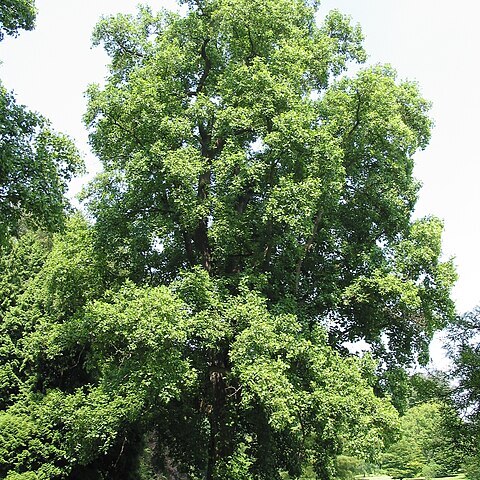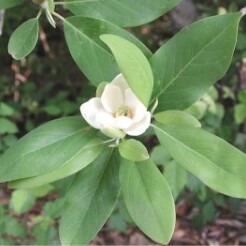Trees or shrubs , deciduous or evergreen, aromatic. Pith homogeneous or diaphragmed. Leaves alternate, simple, petiolate; stipules early or tardily deciduous, at first surrounding stem, adnate on adaxial side of petiole (free in Magnolia grandiflora ), often ochreate, leaving persistent annular scar around node. Leaf blade pinnately veined, unlobed (or evenly 2-10-lobed in Liriodendron ), margins entire. Inflorescences terminal, solitary flowers (often paired in Magnolia ashei ), pedunculate; spathaceous bracts 2 (Magnolia ) or 1 (Liriodendron ). Flowers: perianth hypogynous, segments imbricate; tepals deciduous, 6-18, in 3 or more whorls of 3, ± similar or outer tepals sepaloid, inner tepals petaloid; stamens numerous, hypogynous, free, spirally arranged; filaments very short to 1/2 length of anthers; anthers introrse, latrorse, or extrorse, longitudinally dehiscent; connective with distal appendage; pistils numerous, superior, spirally arranged on elongate receptacle (torus), stalked or sessile, free or ±concrescent, 1-locular; placentation marginal, placenta 1; ovules 1-2; style 1, short and recurved (Magnolia ) or large and winglike (Liriodendron ); stigma 1, terminal or terminal decurrent (Magnolia ) or recurved (Liriodendron ). Fruits conelike syncarps consisting of aggregates of coalescent, woody follicles (follicetums, as in Magnolia ) or apocarps consisting of aggregates of indehiscent samaras (samaracetums, as in Liriodendron ). Seeds 1-2 per pistil, arillate, endosperm oily (Magnolia ), or without aril, adherent to dry endocarp ( Liriodendron ).


